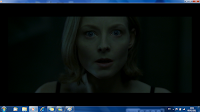By watching several types of films we can pick certain shots and framing that could inspire us in making our thriller, and here are a few ideas that we have looked at.
The Fighter (2011)
In this drama several uses of handheld cameras and dolly's are used to track action, this gives the audience a sense of feeling and creates a fast paced and frantic scene. I have chosen to look at this as we could use a similar type of cinematography in our chase scene to create a tense scene. During the film and fights, close ups are shot using the handheld cameras, to show emotion within the character and the cameras are swung rapidly between the boxer and the sideline, this helps create the sense of fury and danger within the scene which we hope to recreate.
Panic Room (2002)

 When the chase is happening within the film, cameras are planted at a low angle on the floor to capture the feet running away from the attackers. Within the film, a slow motion shot is used as the woman tries to grab the phone, this creates a tense moment and makes the watcher think about the consequences of that action. Whilst she is trying to reach for the film, the diegetic sound of a thud is heard, whilst it is being shown in slow motion. By adding this sound to the shot we can see how desperate she is to get the phone. As the phone escapes her grasp we can see the struggle In the top picture when a close up of Megs face is shown, we can see the fear etched on her face. This creates a scary and tense atmosphere for the viewer.
When the chase is happening within the film, cameras are planted at a low angle on the floor to capture the feet running away from the attackers. Within the film, a slow motion shot is used as the woman tries to grab the phone, this creates a tense moment and makes the watcher think about the consequences of that action. Whilst she is trying to reach for the film, the diegetic sound of a thud is heard, whilst it is being shown in slow motion. By adding this sound to the shot we can see how desperate she is to get the phone. As the phone escapes her grasp we can see the struggle In the top picture when a close up of Megs face is shown, we can see the fear etched on her face. This creates a scary and tense atmosphere for the viewer.
The Godfather (1972)
In this scene rapid editing is used to replicate the danger and fury between the characters.
By doing this you can establish the fast action and danger within the scene. Using fast rapid cuts is something we hope to achieve in the chase scene of our thriller.
By doing this you can establish the fast action and danger within the scene. Using fast rapid cuts is something we hope to achieve in the chase scene of our thriller.
Tom Smith

No comments:
Post a Comment